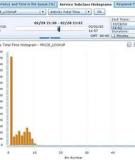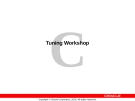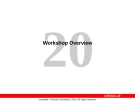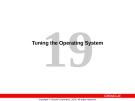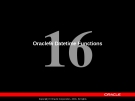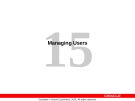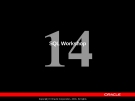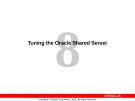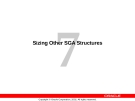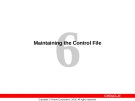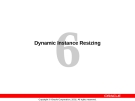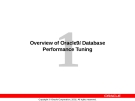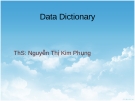
Oracle xml
-
Tổng quát Bài viết này cung cấp thông tin về việc sử dụng Optim Development Studio (ODS-Công cụ phát triển Optim) để tạo, soạn thảo, triển khai và gỡ rối các thường trình PL/SQL cho Phiên bản 9.7 của DB2 Linux, UNIX và Windows (LUW), các cơ sở dữ liệu Oracle 10g và Oracle 11g. Giả định bạn có kiến thức cơ bản về DB2 và Oracle và đã quen thuộc với các công việc trong một môi trường phát triển phần mềm dựa trên Eclipse. Khả năng để phát triển, gỡ rối và triển khai khi sử dụng PL/SQL...
 60p
60p  buncha_1
buncha_1
 11-05-2013
11-05-2013
 90
90
 5
5
 Download
Download
-
Tổng quan Công cụ trình xử lý dòng lệnh và hơn nữa, CLPPlus, cung cấp các tính năng cốt yếu cho người sử dụng di trú từ Oracle đến DB2 và cũng cho người sử dụng DB2 và Informix. Bằng cách sử dụng CLPPlus, người dùng đang di trú đến DB2 có thể chạy các tập lệnh SQL hiện có với DB2 cho Linux, UNIX và Windows với rất ít sửa đổi hoặc không có sửa đổi nào. Người hiện tại đang dùng DB2 cũng có thể tận dụng lợi thế của một số các tính năng mới và lợi...
 22p
22p  buncha_1
buncha_1
 11-05-2013
11-05-2013
 130
130
 25
25
 Download
Download
-
Redundant Arrays of Inexpensive Disks Technology (RAID)
 12p
12p  trinh02
trinh02
 28-01-2013
28-01-2013
 59
59
 6
6
 Download
Download
-
Small shared pool Small database buffer cache Small redo log buffer cache Missing indexes Rollback segments and undo tablespace Sort area size incorrectly set Assorted
 16p
16p  trinh02
trinh02
 28-01-2013
28-01-2013
 57
57
 6
6
 Download
Download
-
After completing this lesson, you should be able to do the following: Use the Oracle tuning methodology to diagnose and resolve performance problems Use Oracle tools to diagnose performance problems Understand the goals of the workshop
 14p
14p  trinh02
trinh02
 28-01-2013
28-01-2013
 76
76
 5
5
 Download
Download
-
After completing this lesson, you should be able to do the following: Describe different system architectures Describe the primary steps of OS tuning Identify similarities between OS and DB tuning Understand virtual memory and paging Explain the difference between a process and a thread
 14p
14p  trinh02
trinh02
 28-01-2013
28-01-2013
 50
50
 5
5
 Download
Download
-
After completing this lesson, you should be able to do the following: Interpret the concept of a hierarchical query Create a tree-structured report Format hierarchical data Exclude branches from the tree structure
 18p
18p  trinh02
trinh02
 28-01-2013
28-01-2013
 51
51
 4
4
 Download
Download
-
Auditing If an unauthorized user is deleting data, then the DBA might decide to audit all connections to the database and all successful and unsuccessful deletions from all tables in the database. The DBA can gather statistics about which tables are being updated, how many logical inputs/outputs (I/Os) are performed, and how many concurrent users connect at peak times.
 16p
16p  trinh02
trinh02
 28-01-2013
28-01-2013
 53
53
 9
9
 Download
Download
-
After completing this lesson, you should be able use the following datetime functions: TZ_OFFSET CURRENT_DATE CURRENT_TIMESTAMP LOCALTIMESTAMP DBTIMEZONE SESSIONTIMEZONE EXTRACT FROM_TZ TO_TIMESTAMP TO_TIMESTAMP_TZ TO_YMINTERVAL
 20p
20p  trinh02
trinh02
 28-01-2013
28-01-2013
 52
52
 3
3
 Download
Download
-
Users and Security Security domain The database administrator defines the names of the users who are allowed to access a database. A security domain defines the settings that apply to the user. Authentication mechanism A user who requires access to the database can be authenticated by one of the following: Data dictionary Operating system Network The means of authentication is specified at the time the user is defined in the database and can be altered later. This lesson covers authentication by database and by operating system only.
 20p
20p  trinh02
trinh02
 28-01-2013
28-01-2013
 83
83
 3
3
 Download
Download
-
This workshop covers: Creating tables and sequences Modifying data in the tables Modifying table definitions Creating views Writing scripts containing SQL and iSQL*Plus commands Generating a simple report
 14p
14p  trinh02
trinh02
 28-01-2013
28-01-2013
 75
75
 4
4
 Download
Download
-
After completing this lesson, you should be able to do the following: Identify issues associated with managing users in an Oracle Shared Server environment Configure the Oracle Shared Server environment to optimize performance Diagnose and resolve performance issues with Oracle Shared Server processes
 14p
14p  trinh02
trinh02
 28-01-2013
28-01-2013
 61
61
 5
5
 Download
Download
-
After completing this lesson, you should be able to do the following: Monitor and size the redo log buffer Monitor and size the Java pool Control the amount of Java session memory used by a session
 16p
16p  trinh02
trinh02
 28-01-2013
28-01-2013
 52
52
 5
5
 Download
Download
-
Control File The control file is a small binary file necessary for the database to start and operate successfully. Each control file is associated with only one Oracle database. Before a database is opened, the control file is read to determine whether the database is in a valid state to use. A control file is updated continuously by the Oracle server during database use, so it must be available for writing whenever the database is open. The information in the control file can be modified only by the Oracle server; no database administrator or end user can edit the control file....
 16p
16p  trinh02
trinh02
 28-01-2013
28-01-2013
 63
63
 3
3
 Download
Download
-
After completing this lesson, you should be able to do the following: Implement dynamic SGA allocation Dynamically adjust the buffer caches Dynamically adjust the shared pool
 12p
12p  trinh02
trinh02
 28-01-2013
28-01-2013
 37
37
 5
5
 Download
Download
-
Built-In Database Objects In addition to creating the database files, several other structures are created. Data dictionary: Contains descriptions of the objects in the database Dynamic performance tables: Contains information used by the database administrator (DBA) to monitor and tune the database and instance PL/SQL packages: Program units adding functionality to the database. These packages are created when the catproc.sql script is run after the CREATE DATABASE command. PL/SQL packages will not be discussed within the scope of this course.
 20p
20p  trinh02
trinh02
 28-01-2013
28-01-2013
 68
68
 4
4
 Download
Download
-
After completing this lesson, you should be able to do the following: Define the roles associated with the database tuning process Describe the dependencies between tuning in different development phases Describe service level agreements Identify tuning goals Identify common tuning problems Employ tuning activities during development and production Balance performance and safety trade-offs
 16p
16p  trinh02
trinh02
 28-01-2013
28-01-2013
 53
53
 5
5
 Download
Download
-
Before a database is created, the UNIX environment must be configured and the Oracle9i server must have already been installed. Four environment variables must be set: ORACLE_HOME, ORACLE_SID, PATH, LD_LIBRARY_PATH. ORACLE_HOME is the full path to the top directory in which the Oracle9i Server is installed. The directory for ORACLE_HOME should be supplied by the person who installed the server, usually the UNIX administrator or the DBA. ORACLE_SID is a user-definable name assigned to an instance of a database.
 10p
10p  trinh02
trinh02
 28-01-2013
28-01-2013
 65
65
 6
6
 Download
Download
-
Course Objectives This course is the first in a series of courses that cover the core database administrator tasks. The tasks covered in this course are: Outlining the Oracle architecture Planning and creating databases Managing the memory, process, physical, and logical structures Managing database users by controlling and monitoring their actions Using the Globalization Support features
 4p
4p  trinh02
trinh02
 28-01-2013
28-01-2013
 64
64
 4
4
 Download
Download
-
Nơi lưu trữ tất cả thông tin được dùng để quản lý các đối tượng trong CSDL. ex: tables, views, Oracle users, functions… Được cấu trúc giống như 1 CSDL bình thường, gồm có tables và views.Read-Only.
 14p
14p  trinh02
trinh02
 28-01-2013
28-01-2013
 66
66
 4
4
 Download
Download
CHỦ ĐỀ BẠN MUỐN TÌM








